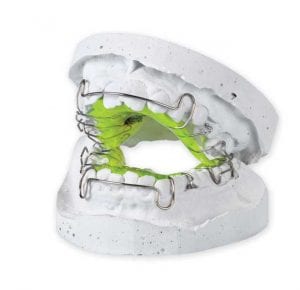Gosh! Who knew having children was going to be this hard? What a lot of work it is to keep all aspects of their lives, all their little engine parts, running smoothly. If it isn’t one thing, it’s another. If it isn’t their physical well-being that needs tending, it’s their mental health. Where’s the instruction manual that tells us what to do, when, and how to know when we need to start, or stop, worrying?
infectious mononucleosis
What is it and do we need to worry about it? Not really, says Dr. Sarah Mermelstein, instructor in pediatrics at Washington University School of Medicine, because in the vast majority of cases, the condition, caused by the Epstein-Barr virus, poses no serious threat. Epstein-Barr, she says, is one of the most common human viruses. In some developing countries, 100 percent of people will have had mono before the age of 15. It causes sore throat, swollen lymph nodes and fever. Fatigue, which is often but not always present, can linger for months, with 15 percent of people still experiencing varying degrees of tiredness six months later. Tiredness can range from a general lack of energy to feeling like you simply can’t get out of bed. Children, Mermelstein says, usually have fewer symptoms, while the condition is felt more acutely in young adults between the ages of 15 and 24.
“Because it tends to show itself more in the teen years, some circles refer to it as ‘the kissing disease,’” says Dr. Joshua Arthur, SLUCare physician and associate professor of pediatrics at SSM Health Cardinal Glennon Children’s Hospital. “But the virus, present in saliva, can infect someone decades after it first shows up.” Arthur says a blood test is the only true way to know whether a person has infectious mononucleosis, and even then, there is no real treatment. Mermelstein recommends the same course of action as that for a cold or flu—hydration, rest and an over-the-counter medicine for fever and muscle aches. If you have mono, you can avoid passing the virus to others by not kissing and not sharing things like drinking glasses, eating utensils and toothbrushes.
Both doctors caution, however, that the virus also can cause an enlarged spleen, which potentially is dangerous for anyone who plays sports. “If your spleen is enlarged, it can rupture,” Arthur says, adding that a person should stay off the playing field until the organ has returned to its normal size. This can take as long as a month, he says, and a doctor should examine the patient regularly during this time. More than half of those with mono will have this symptom, he notes, since the viral infection relates to atypical blood cells that collect in the spleen.
As soon as a person recovers from mono, symptoms will go away for good, but the patient will always carry the virus that caused it, Arthur says.
 orthodontics
orthodontics
Orthodontics is a specialty field of dentistry that diagnoses and corrects misaligned teeth and the jaws. “It’s like solving a Rubic’s Cube, a crazy puzzle!” says Dr. William (Bill) Mastorakos, owner of Mastorakos Orthodontic Associates. “There’s so much going on in there, so many things to consider.” He says children really should be seen around age 8. This, he explains, is the period of ‘mixed dentition,’ when a child has half their baby teeth and half their adult teeth. “It’s the magical age when you can see what the current problems are and what the future ones might be,” Mastorakos says.
He says those who need treatment may have significant skeletal problems in one or more planes of space—vertical, side-toside or up-and-down, in addition to issues like overcrowding of teeth. Orthodontics, he stresses, is about a lot more than a perfect smile. “The smile comes about from everything else being right. Function and aesthetics are inseparable,” he points out.
Dr. Zac Varble of Varble Orthodontics says other common problems occur when teeth erupt in the wrong position, making them more susceptible to trauma from a possible fall, and when a child’s thumb sucking pushes teeth out of line. Treatment in this phase of growth usually lasts between six and 12 months, Varble says, and can involve limited braces (on some but not all teeth), extraction of teeth to allow for future eruptions, headgear to guide jaw growth, and reminder appliances to help a patient overcome a habit like thumb sucking. Mastorakas adds that other things like improper teeth brushing and night grinding also can be detrimental to proper growth. “It tends to be the case that bad growth will continue to grow badly, and good growth will continue to grow well,” he says.
Permanent dentition, meanwhile, refers to the pubescent or post-pubescent phase when patients have all or most of their permanent teeth. “These treatment plans usually correct non-ideal tooth positions and jaw relationships and involve orthodontic appliances like full braces,” Varble explains, adding that in either case, general and pediatric dentists are key in early detection of problems. As for what’s new in the field, Varble says orthodontists are using evidence-based approaches to determine more accurately when to time treatment in children, and whether it is always beneficial to correct an issue early.
Both orthodontists acknowledge treatments can be expensive. “We understand the financial commitment parents make, and many offices accept a large variety of dental insurances with orthodontic coverage,” Varble says. However, coverage usually comes in a lump sum benefit and rarely covers the entire cost, he says. “Many offices can get creative with financial arrangements to ease the burden,” he notes, adding that initial assessments usually are complimentary.
“Fixing these problems is like building a ship in a bottle,” Mastorakas says. “That’s why it can be expensive!”
 caution, not fear
caution, not fear
Katy Sebestik, LCSW, a registered play therapist and owner of Playful Growth Counseling, says she is having many more conversations these days about fear in children. “Social media and the endless scroll of news can seriously threaten a child’s sense of peace,” she explains. “The running loop of bad news can make children, and indeed all of us, feel that bad news is the norm.”
The difficulty comes, Sebestik says, when teaching children ways to keep themselves safe creates fear. For example, school intruder drills are meant to protect young people but can contribute significantly to their unease. In this particular case, Sebestik says, it is important that children know there are adults looking out for them, and that they are not alone. But in the more general case of ‘stranger danger,’ the message is more complicated.
Ladue Police Chief Rich Wooten stresses the importance of age-appropriate conversations, and of finding the right balance between giving too much and too little information. He says parents need to be mindful, first of all, of having adult conversations in the “indirect presence” of children. “Children pick up on things,” he says. “If you are talking on the phone to a friend, be aware that your child is in earshot and may be picking up details you don’t want them to know. Kids are curious. They listen.”
Wooten also supports the idea that anxiety is reduced when both children and adults feel empowered. “Knowing what to do in certain situations, having a game plan, will usually lessen fear,” he says. “Having drills for school and home that address what we do in certain situations become matter-of-fact and give us all a sense of control.” He suggests telling kids that in certain situations, ordinary rules can cease to apply: if a grown-up is behaving strangely and making you feel uncomfortable, you don’t have to be polite; if there’s a fire outside your bedroom door and you need to get out, it’s OK to pick up a chair and break a window.
The police chief concurs that the 24/7 news cycle can “play with our heads.” Bad news we once wouldn’t have heard because it happened in a small town far away now saturates the space. News programs, Wooten says, need to fill their time, which can skew our sense of reality. “If you believe everything you see or hear these days, of course it sounds like we are living in dangerous times!” he says. To combat a negative, anxiety-inducing view of the world, he encourages older kids to become their own fact checkers. “In addition to possibly lessening their fear, it will teach them to think critically,” he concludes. “And that can’t be bad.”








